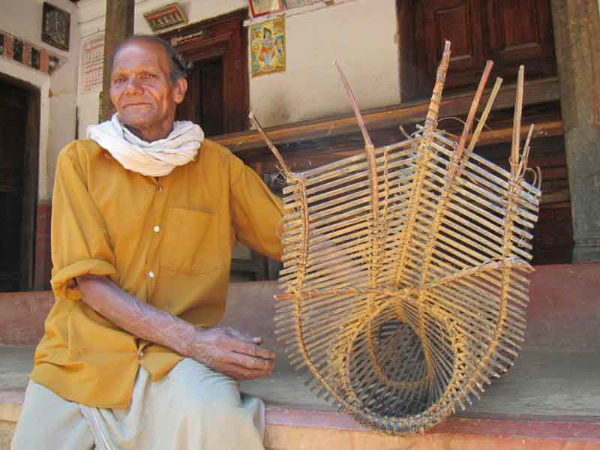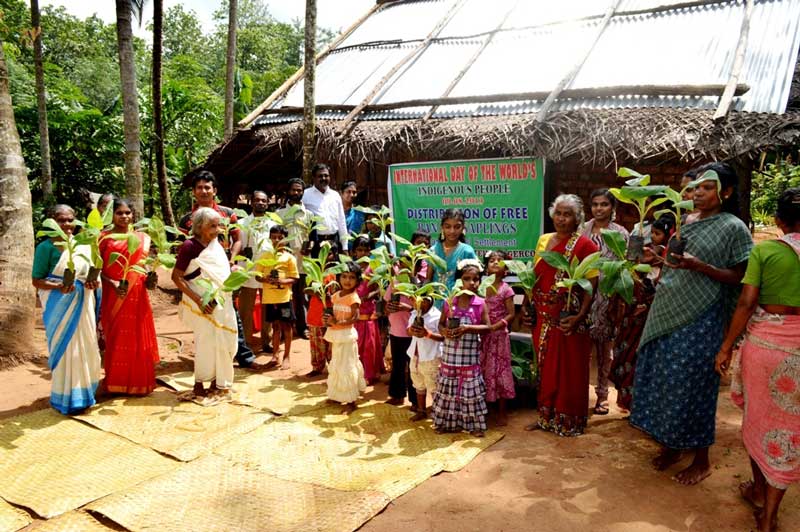Lachman Khubchandani believes that tribal culture provides “a living example of the Gandhian concept of trusteeship”.
Tarsh Thekaekara asserts that tribal communities “have been living in harmony with nature for centuries and have not caused any destruction at all.”
Arup Maharatna quotes C. von Fürer-Haimendorf, “a celebrated authority on Indian tribes”:

Photo © Arun VC
[O]nly one or two generations ago many tribal communities enjoyed the advantages of a well-balanced ecology fully in tune with the natural resources of their environment and boast an overall quality of life superior in many ways to that of large sections of the Indian rural population. Adequate food-supplies, non-exploitative social structure, freedom from indebtedness and other forms of dependence on non-tribal outsiders, equality of the sexes and a remarkable tolerance in all interpersonal relations were outstanding characteristics of such tribal societies.

Kaani community near Kanyakumari © Davidson Sargunam
Environmental educationist Davidson Sargunam attributes the remarkable health among elders of the Kaani community to these very factors: even during celebrations, they eat with moderation and avoid preserved food just as cooking with oil. During a recent medical survey among 350 members living in the Kanyakumari mountain forests, a Kaani woman aged 95 was found to be enjoying perfect health. Conversely, an increase of diabetes-induced eye problems and hypertension was observed among those who had adopted the less active, more stressful lifestyle characteristic of urban Indian society.
Columnist and human rights activist Mari Marcel Thekaekara, at home amidst the Paniya, Bettakurumba and Kattunaicken village communities of the Nilgiris, observes:
We non-adivasis were constantly stunned by the fact that Adivasi kids never fought for a sweet, however tiny. They always shared it solemnly and equally, a truly amazing sight to see.
Their school which is managed by members of their own communities – encourages these youngsters to “teach all the kids what Adivasi means and that our people are spread out all over India and all over the world.”

At the Vidyodaya School in Gudalur, importance is given not just to academic development of the children; Handicrafts, innovative project work, singing, dancing, drawing, painting and theatre are conducted to bring out the innate creative abilities of the children. Adivasi traditional songs, dances and story-telling are also given great importance.
Source: Adivasi.net – Vidyodaya
- Continue the guided tour – Part 7 >>
- Start the guided tour (Part 1)